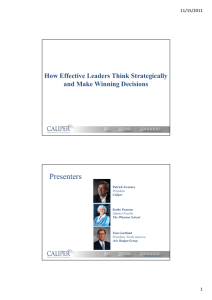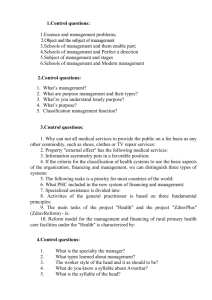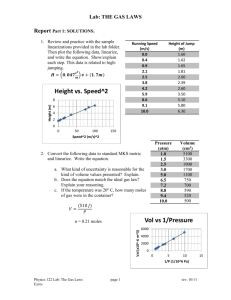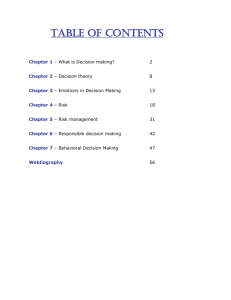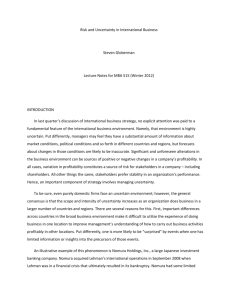DECISION MAKING STYLES - Southeastern Louisiana University
advertisement
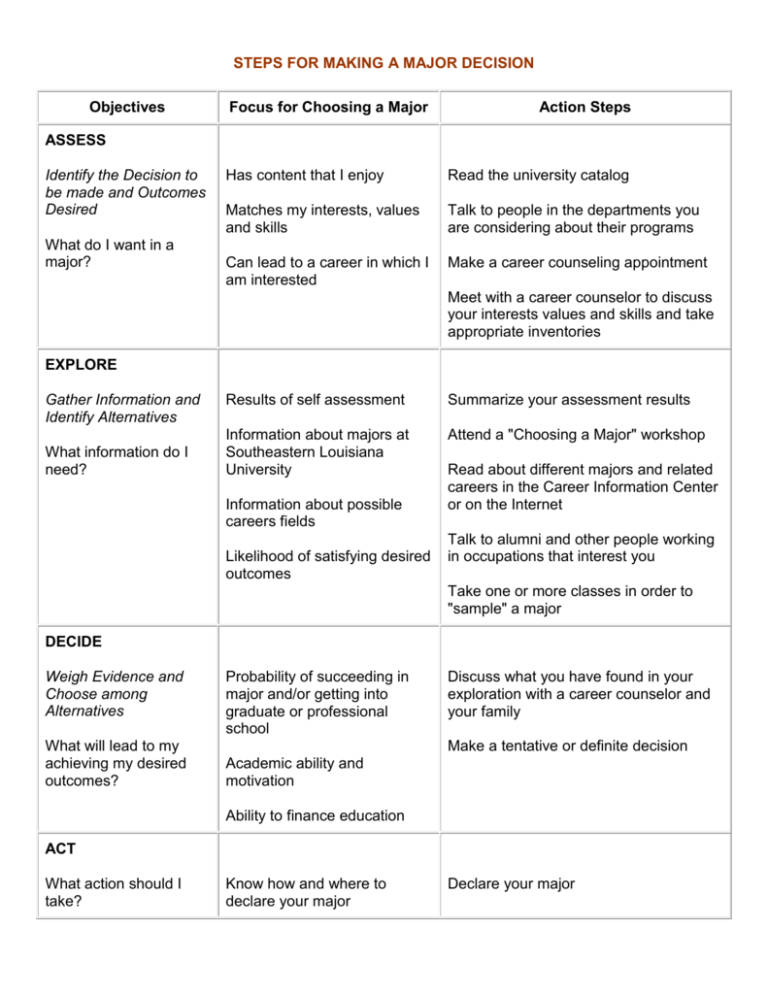
STEPS FOR MAKING A MAJOR DECISION Objectives Focus for Choosing a Major Action Steps ASSESS Identify the Decision to be made and Outcomes Desired What do I want in a major? Has content that I enjoy Read the university catalog Matches my interests, values and skills Talk to people in the departments you are considering about their programs Can lead to a career in which I am interested Make a career counseling appointment Meet with a career counselor to discuss your interests values and skills and take appropriate inventories EXPLORE Gather Information and Identify Alternatives What information do I need? Results of self assessment Summarize your assessment results Information about majors at Southeastern Louisiana University Attend a "Choosing a Major" workshop Information about possible careers fields Likelihood of satisfying desired outcomes Read about different majors and related careers in the Career Information Center or on the Internet Talk to alumni and other people working in occupations that interest you Take one or more classes in order to "sample" a major DECIDE Weigh Evidence and Choose among Alternatives What will lead to my achieving my desired outcomes? Probability of succeeding in major and/or getting into graduate or professional school Discuss what you have found in your exploration with a career counselor and your family Make a tentative or definite decision Academic ability and motivation Ability to finance education ACT What action should I take? Know how and where to declare your major Declare your major DECISION MAKING STYLES Activity Identify the different styles you use most often to assess your personal decision making style. Which one are you currently using to help you declare a major? Write down the decision-making styles you have used most often in the past and give an example of how you used it. o Impulsive: Little thought or examination, taking the first alternative, don't "look before you leap." o Fatalistic: Letting the environment decide, leaving it up to fate, "it's in the cards." o Compliant: Let someone else decide following someone else's plans, "anything you say, sir." o Delaying: Taking a moratorium, postponing thought and action, "I'll cross that bridge later." o Agonizing: Getting lost in all the data, getting overwhelmed with analyzing alternatives, "I don't know what to do." o Planning: Using a procedure so that the end result is satisfying, a rational approach with a balance between cognitive and emotional, "weighing the facts." o Intuitive: A mystical, preconscious choice, based on "inner harmony," it feels right. o Paralysis: Accepting responsibility but unable to approach it, "can't face up to it." o Deviant: Asking the advice of others but then doing the opposite of what is suggested. "I’m going to do it my way." Decision-making style Give an example of how you used it Decision-making style Give an example of how you used it Positive Uncertainty is a decision making style, based on two assumptions: 1. The future cannot be predicted 2. People are not naturally rational in their choices Positive Uncertainty requires that we shift our decision making approach. FROM TO Traditional Decision Making Approach Positive Uncertainty Approach Be: Be: Focused by setting clear goals Focused and flexible Aware by collecting relevant facts Aware and wary Objective by predicting probable outcomes Objective and optimistic Practical by choosing actions rationally Practical and magical Gelatt believes the decision-making skills you need in the future include: Ability and comfort with changing one's mind Willingness to keep one's mind open Ability and comfort with being uncertain Willingness to be positive about uncertainty Positive Uncertainty uses a 2 X 4 process of making decisions (2 attitudes X 4 factors). 2 Attitudes you must develop 1. Accept the past, present, and future as uncertain 2. Be positive about the uncertainty 4 Factors you must consider with every decision 1. What you want 2. What you know 3. What you believe 4. What you do The Four Paradoxical Principles of Positive Uncertainty: 1. Be focused and flexible Know what you want but don't be sure - seek something but be receptive to something else. Stay flexible. Treat your goals like hypotheses - set goals but stay open to changing plans as needed. Balance achieving goals and discovering them - as goals are achieved, set new ones. 2. Be aware and wary Recognize that knowledge is power and ignorance is bliss - an open mind is receptive, an unreceptive mind is closed. When you admit you don't know, you open yourself up to new learning. Treat memory as an enemy - we remember the past better than we imagine the future. Memory is selective, only works backwards and can block your openness to new knowledge. We need multidirectional minds. Balance using information with imagination - the more you know, the more you realize what you don't know. Awareness of this opens you up to new use of your imagination. 3. Be Objective and optimistic Reality is in the eye and the I of the beholder - Everything begins with belief. If you think you can you might. If you think you can't you can't. Treat beliefs as prophecy - Reality is partly what you see and partly what you make it to be. Creating your future requires that you dream it and do it. Balance reality testing with wishful thinking - Practice envisioning desirable future scenarios as if they are self-fulfilling prophesies. 4. Be practical and magical Learn to plan and plan to learn - The future doesn't exist, it must be invented and constructed, imagined and acted. Set goals and devise strategies while expecting change to occur. Treat intuition as real - There is a right brain that is as real as the left brain. Intuition is also called insight, sixth sense, hunch, and knowing without evident rational thought. Cultivate it and learn to trust it. Balance responding to change with causing change - Responding is reactive while causing is proactive. We need to do both - respond to the past and think and plan positively for the future. 4 Commandments of Positive Uncertainty 1. Thou shalt not worship false goals. The process of goal setting is more important than the goal itself. 2. Covet thy neighbor's advice. Get second and third opinions from a variety of people. 3. Thou shalt sometimes commit credulity. Be willing to engage in wishful thinking and occasional blind faith. 4. Honor thy right and left-brain. Two heads (perspectives) really are better than one. Does It Work? The proof that Positive Uncertainty works comes from hindsight. Hindsight, which is always 20/20, allows you to learn from each decision you make. Hindsight can also be used to improve your power of positive uncertainty. Source: Gelatt, H. B. (1991). Creative decision making using positive uncertainty. Los Altos, CA: Crisp Publishing.

